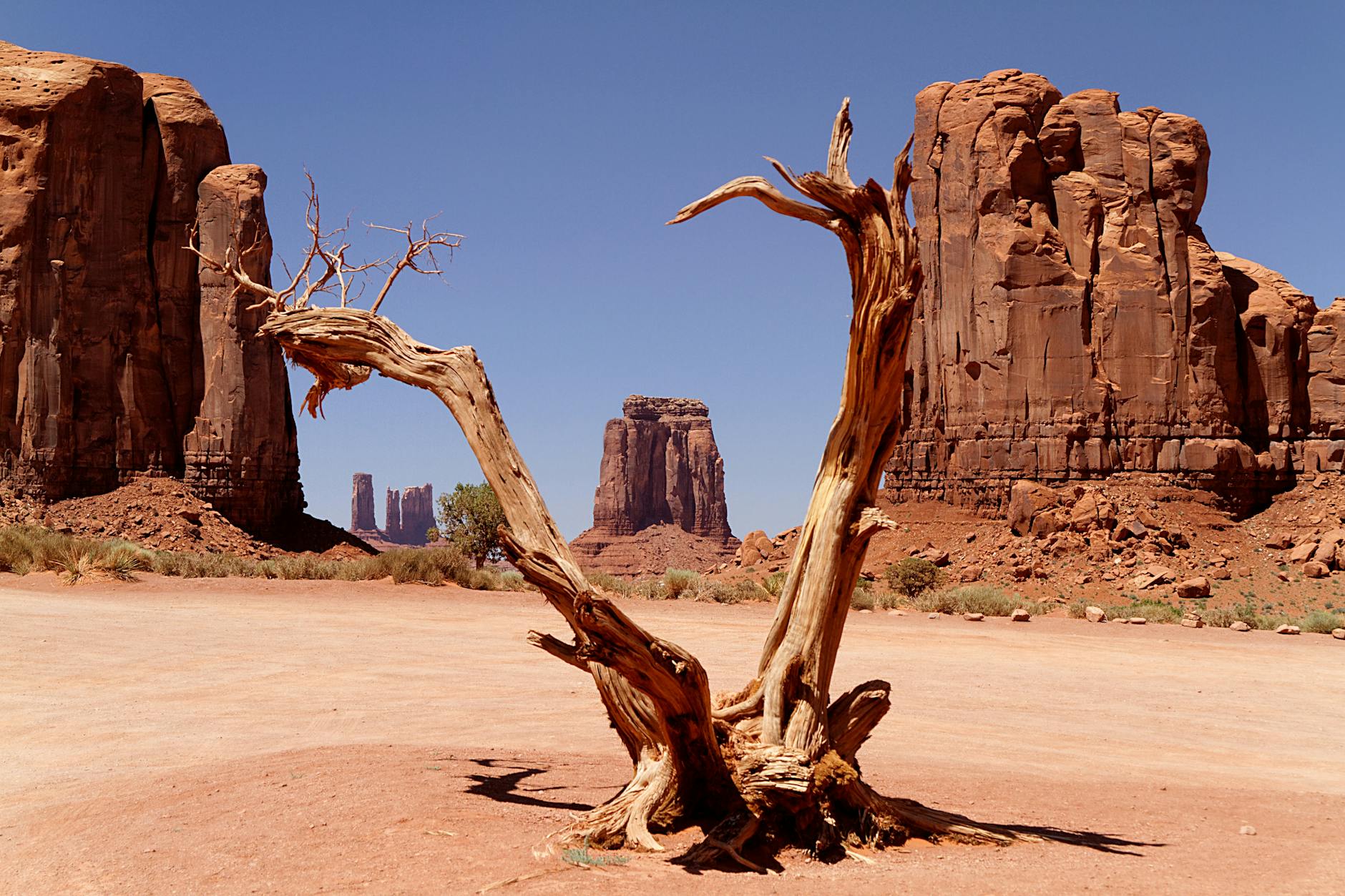Why Australia's Filmmakers Are Drawn to Africa's Unique Landscapes

Africa's Diverse Ecosystems
Every time I step onto Africa's vast lands, it feels like a cinematic adventure waiting to unfold. From the sacred expanse of the Serengeti, reminiscent of South American tours I’ve taken through the Amazon rainforest, Africa's iconic savannahs offer an unparalleled setting. These grasslands, teeming with migrating wildebeests and prowling lions, are perfect for capturing the raw and unfiltered essence of nature.
Iconic Savannahs
The advantage of filming on the savannah is the overwhelming sense of space and freedom. When you're amid the golden grasses stretching to the horizon, like at Melbourne Zoo's conservation programs, you realise that these lands are home to some of Earth's most majestic creatures. The excitement of seeing herd movements or predators is something I try to convey in my documentaries.
Lush Rainforests
Moving into the lush rainforests, Africa showcases a different story altogether—one that’s a sensory overload. The dense foliage, vibrant birdcalls, and hidden amphibians remind me of the South America tours I've embarked on. Immersing myself in the rainforests, I’m reminded of wildlife photography exhibits at the National Gallery of Victoria, each frame capturing the diverse life these canopies shelter.
Breathtaking Deserts
As a filmmaker with an eco-conscious vision, Africa’s deserts bring out my creative instincts. The sight of expansive dunes under a starry canvas rivals any scene from a fantasy film. It's akin to scenes I’ve wanted to capture during South Africa tours. Each sunrise and sunset offers light displays that are simply captivating. Every location in Africa offers something unique, making it a treasure trove for storytellers like me.
Filmmaking Opportunities
Scenic Variety
As a filmmaker, I've been endlessly captivated by the scenic variety that Africa offers. From the golden, rolling plains of the Serengeti to the breathtaking peaks of the Atlas Mountains, the continent provides a stunning backdrop for storytellers who wish to highlight the beauty and complexity of the natural world. While exploring Africa tours, I once witnessed a lion pride against the backdrop of a fiery African sunset, a scene that rivals Melbourne's iconic Royal Botanic Gardens Victoria in beauty and tranquillity. It's moments like these that remind us of the undeniable power of nature.
Rich Wildlife
Africa boasts some of the most extraordinary wildlife spectacles on the planet. Filmmakers can encounter an array of species, from the majestic elephants in Botswana to the elusive leopards of the Okavango Delta. For those who are passionate about conservation, African tours offer the chance to observe and document complex animal behaviours in their natural habitats. Through my lens, I captured a herd of elephants migrating across the savannah, a scene as powerful as any conservation effort seen at Melbourne Zoo's conservation programs.
Cultural Melting Pot
The rich tapestry of cultures in Africa provides a unique opportunity for filmmakers to delve into stories beyond nature. Each African nation offers a distinctive blend of traditions, languages, and histories. During my travels documenting South America travel, I realised how similar the vibrancy of African cultures is to that of South America. This rich cultural diversity is a treasure trove for storytellers, enabling us to craft narratives that are as deep and varied as the wildlife photography exhibits at the National Gallery of Victoria.
Environmental Considerations
Impact of Film Crews
As an eco-conscious filmmaker, it's essential to contemplate the footprint that film crews leave on the delicate ecosystems we love to capture. Filmmaking in the wild often brings logistical challenges, particularly when working on sites that host rich biodiversity, similar to the diverse displays seen in the wildlife photography exhibits at the National Gallery of Victoria. It's crucial to minimise disruptions to habitats, avoiding the use of heavy equipment unless absolutely necessary.
Conservation Partnerships
Collaborating with conservation programs is another key step. Building strong relationships with organisations can aid in responsible filming, much like the Melbourne Zoo's conservation programs do in supporting endangered species. In my own filmmaking journeys across Africa, working alongside animal sanctuaries and local experts enabled me to gain deeper insights and contribute positively to their ongoing efforts in preserving biodiversity. Filmmakers can play a pivotal role in conserving natural wonders by offering their platforms to highlight these important initiatives.
Ethical Filmmaking Practices
Practising ethical filmmaking in exotic locales like those in South America holidays or an Africa safari means holding a commitment to the environment and striking a balance between storytelling and conservation. This involves planning shoots meticulously to ensure minimal environmental disruption, gaining permits for every location, and respecting local cultures and traditions. Such practices ensure that the beauty we capture on film today remains undisturbed for future generations to marvel at.
Challenges in Africa
Logistical Difficulties
From my experience as an eco-conscious filmmaker focusing on Africa, one of the primary challenges is logistical difficulty. The unpredictable nature of an African safari, with its vast and rugged landscapes, presents significant transportation and accommodation hurdles. When filming, we often need to adapt to limited resources and infrastructure, which can become taxing. It's reminiscent of the scenes I've shot involving slate exhibits at Melbourne Zoo, where resources were carefully managed but in vastly different contexts.
Regulatory Hurdles
Navigating regulatory hurdles in Africa can be complex and time-consuming. Each country often has its unique set of rules, permits, and customs procedures, which can result in delays and increased costs. My projects have underscored the necessity of thorough preparation, echoing the meticulous planning akin to executing a Galapagos cruise documentary. We must respect local legislation to avoid compromising the country's conservation efforts.
Community Engagement
Community engagement is a critical facet of filming in Africa, yet it comes with its set of challenges. Balancing the communities' cultural practices with the needs of the film project requires diplomacy and sensitivity. This mirrors my approach to crafting narratives at exhibits in the National Gallery of Victoria, where authentic representation is paramount. Building credible relationships fosters an exchange of knowledge, allowing us to genuinely portray the heart of the community while ensuring that our presence benefits local environmental initiatives.
Sustainable Filmmaking Strategies
Eco-Friendly Shooting Techniques
While capturing the vibrant essence of Africa’s landscapes, it’s crucial to tread lightly, leaving minimal trace. In my early days of filmmaking, a visit to Melbourne Zoo’s conservation programs deeply influenced my approach. Here’s how you can implement sustainable practices:
- Digital Over Physical: Opt for digital capture to cut down on film waste. This not only reduces environmental strain but also aligns with the advanced, tech-savvy filmmaking standards I adopted after frequenting innovations showcased in the wildlife photography exhibits at the National Gallery of Victoria.
- Eco-Powered Equipment: Solar-powered chargers are invaluable in the vast openness of the savannah. When I filmed there, harnessing the sun's energy was both practical and conscientious.
Collaboration with Local Experts
Engaging with local talent is indispensable. During my project in the lush green realms akin to the Royal Botanic Gardens Victoria, I discovered that collaborating with indigenous guides not only enriched my work but also fostered preservation. Here’s why it matters:
- Cultural Insight: Local experts provide invaluable insights into traditional customs, enhancing narrative authenticity.
- Economic Support: Using local services supports economies, granting them the means to invest further in conservation efforts.
Raising Conservation Awareness
The power of film lies in its ability to inform and inspire change. With each project, emphasise the importance of conservation. Demonstrating how carbon footprint calculator can be used within the shooting equation, for instance, aids in spreading environmental consciousness effectively.
It is essential to weave in personal encounters and stories from places like Melbourne to create a more engaging narrative. Our mission, as stewards of the environment, is to inspire and invoke action—much like I endeavour to do with every film frame preserved in the digital annals of today’s world.


